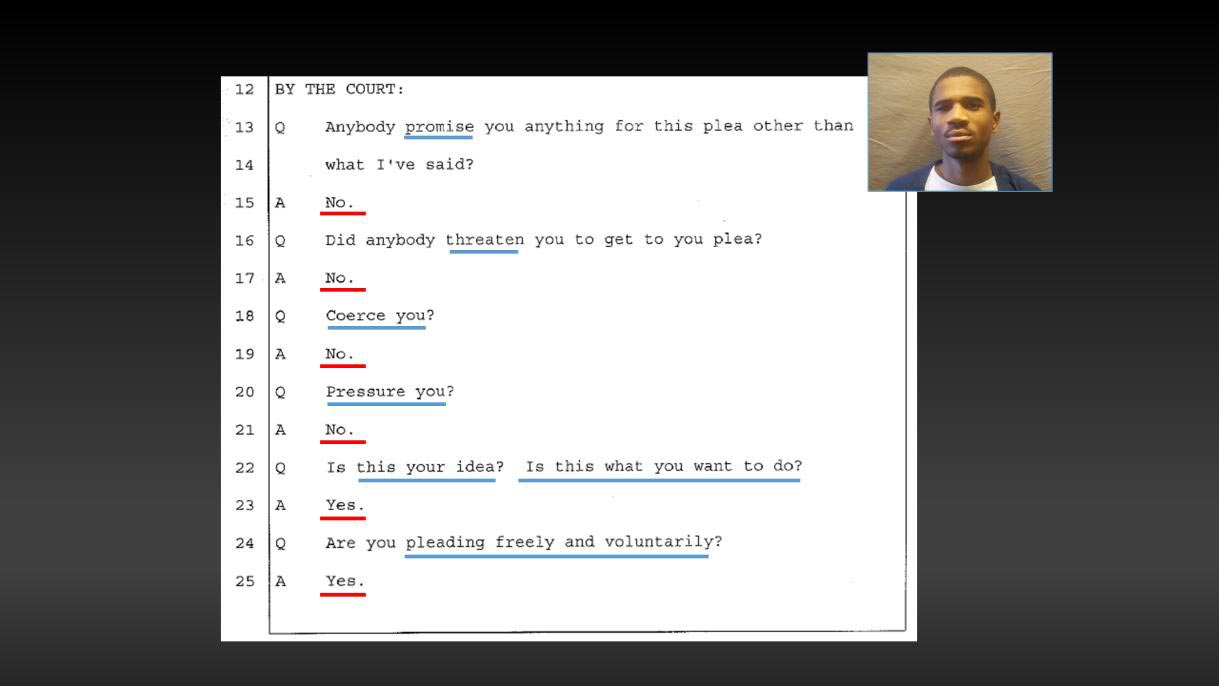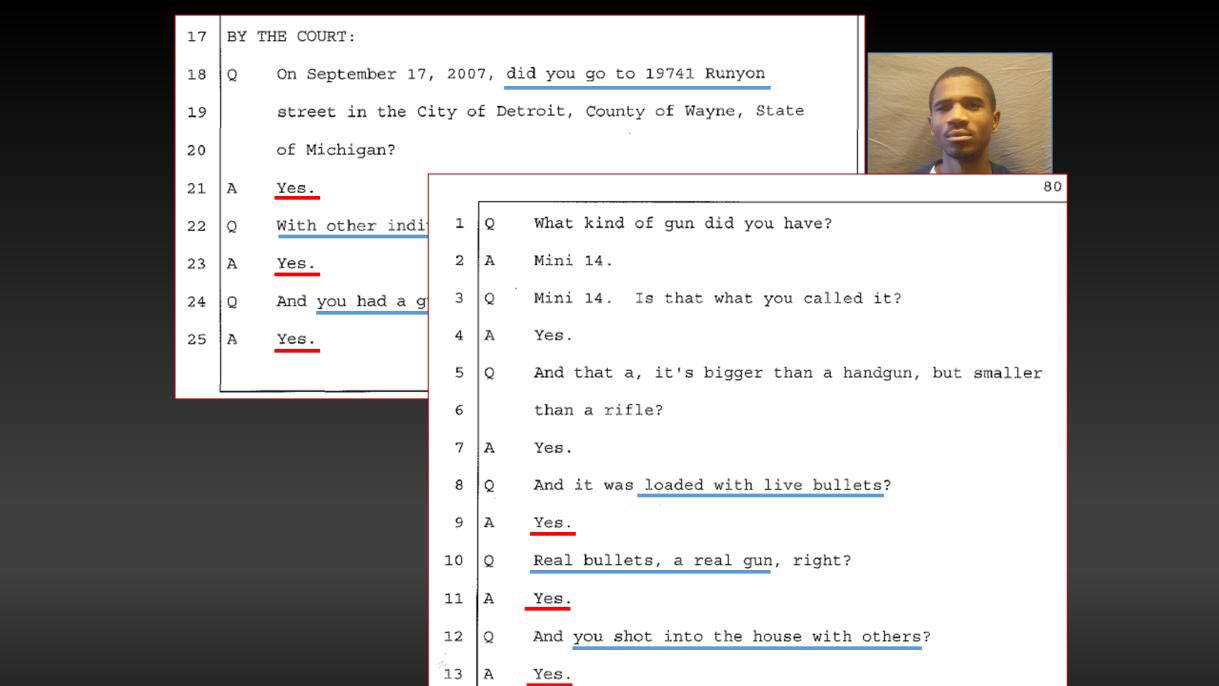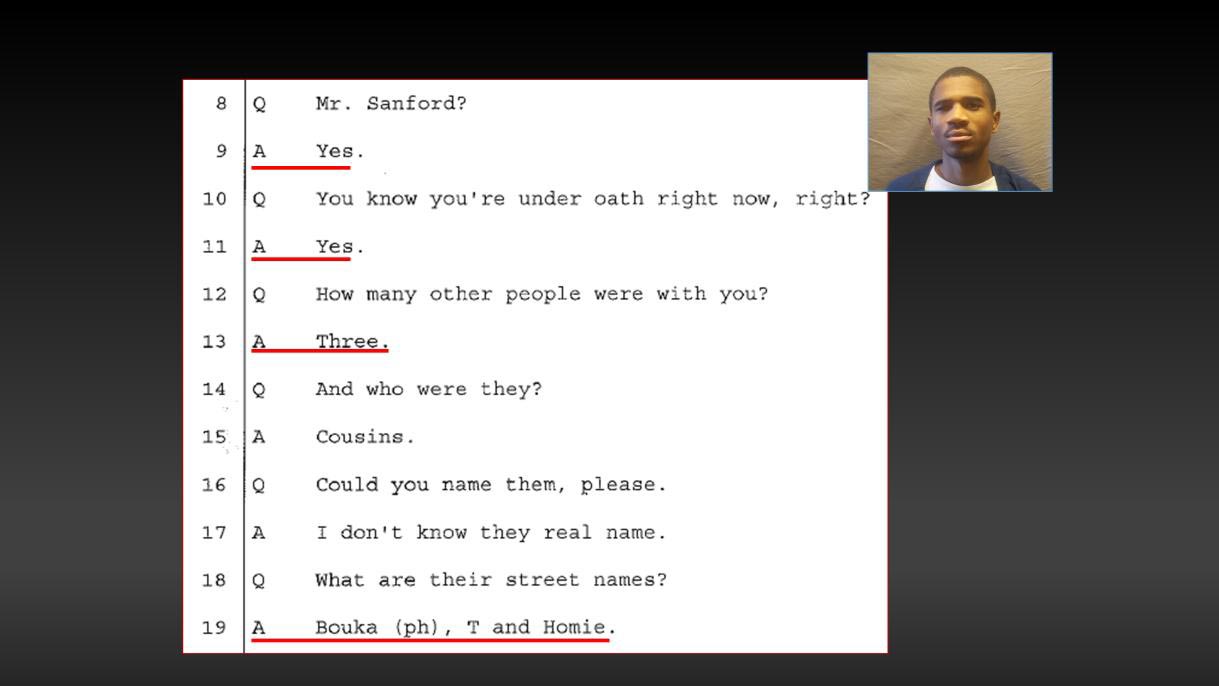Davontae Sanford's Road to Freedom
The people's case against Davontae Sanford
By George Hunter / The Detroit News

Wayne County Prosecutor Kym Worthy
After Davontae Sanford went to prison in 2008, and his lawyers began filing appeals, Wayne County Prosecutor Kym Worthy didn’t say much about his case. The few times she broached the subject, though, Worthy made it clear she thought Sanford was guilty.
Even after a judge vacated Sanford’s sentence, prosecutors dropped murder charges, and Sanford was freed from prison June 8, Worthy refused to proclaim his innocence.
“How I feel about a case is not important,” Worthy said at a June 9 press conference when asked if she thought Sanford was absolved of the crimes for which he had been convicted. “I am not going to comment.”
Although Worthy was mum about the case prior to Sanford’s release from prison, her office’s position was laid out in in dozens of court filings.
Critics say their case against Sanford was flimsy, but even after the charges were dropped, Worthy insisted she had solid evidence against him.
The People vs. Davontae Sanford
The people’s position:
Prosecutors insisted Sanford’s confession was voluntary and accurate, and that he willfully pleaded guilty to the murders. They argued Smothers’ confession did not necessarily acquit Sanford.
“These murders were committed by more than one person so that the guilt of one individual does not necessarily require the exoneration of anyone else,” prosecutors wrote in a March 2009 brief.
Sanford told his stepfather, Jermaine Tillman, during a May 2008 jailhouse telephone call that three men, “Bug,” “T” and “Homie” were involved in the murders, which matched the story Sanford told police in the hours after the shootings. Prosecutors argued in a motion this indicates Sanford’s guilt.
Sanford's plea
Pictured is a portion of the transcript of Davontae Sanford's plea. (Source: Wayne County prosecutor's office)
“If defendant’s guilty plea was false, that is, if it was simply used to garner favor from authority figures, what would possess him to keep up the lie with his stepfather?” prosecutors said.
At her press conference following Sanford’s release from prison, Worthy pointed to the phone call as evidence of his guilt.
But none of the teens Sanford mentioned were ever charged with the killings. Police interviewed them; they each provided solid alibis and were cleared as suspects.
Because Sanford pleaded guilty, prosecutors argued he should have been required to prove his innocence in court.
“Defendant has not sustained his burden of showing by clear and convincing evidence that he is innocent,” prosecutors wrote in a 2012 brief. “Defendant has the burden of showing his innocence by clear and convincing evidence.”
Prosecutors also stressed how Valerie Glover, the only survivor of the Runyon shootings, testified she had a brief conversation with one of the gunmen, who sounded “like a kid” who “didn’t have no bass in his voice.”
Glover also testified the masked man demanded: “Where’s the (expletive) at? I’m going to kill you.” Prosecutors said that suggests robbery, not a contract hit, was the motive for the killings.
Two days after the killings, police executed a search warrant on Sanford’s house and seized a black T-shirt that had “Payday” written on it and a pair of black Dickies brand pants.

A pair of black pants were found at Davontae Sanford's house.Wayne County prosecutor's office
Both were tested for gunshot residue, which was found on the pants, on the right and left thighs.
Sanford’s attorneys argued it was never proven the pants belonged to Sanford, who shared his closet with three other teenage boys. Also, they pointed out Michigan State Police and the FBI don’t conduct gunshot residue tests because they’re unreliable. And, they said, Sanford had no gunshot residue on his other clothes, and no traces of blood on his skin or clothing -- “a highly improbable result given the bloodbath at the victim’s house,” defense attorneys said in a 2015 brief.
Gun evidence: Prosecutors noted experts testified during a Sanford appeal hearing they couldn’t definitively say all 19 spent rifle cartridges came from only one gun.
 Wayne County prosecutor's office
Wayne County prosecutor's office
The 762 x 39 mm casings found at the scene were the type commonly shot from an AK-47, although because some of the Wolf brand casings were made of steel, it’s impossible to tell if they all were shot from the same gun, retired State Police firearms examiner David Balash said. Alcohol, Tobacco, Firearms and Explosives firearms expert Walter Dandridge concluded there likely were two AK-47s fired at the scene.
“The firearms evidence does not support the notion that only two people were involved,” prosecutors said.
Prosecutors said Sanford drew a sketch of the crime scene that included accurate details including the layout of the bodies.

“One need only compare that to the sketch drawn by Evidence Technician Lori Briggs to see the striking similarity between the two,” prosecutors wrote.
The sketch would later prove crucial to the case. During a 2015 Michigan State Police investigation into the Runyon case, former Detroit police official James Tolbert told detectives he had drawn the sketch. That contradicted Tolbert’s testimony in a July 13, 2010 appeals hearing that Sanford had drawn the diagram. State police asked for perjury charges against Tolbert.
Sanford apologized to the victims’ families during his sentencing hearing, which prosecutors said was an indication of guilt.
“I’m sorry for what happened. I didn’t -- I ain’t mean for it to happen,” he said. “It just happened. I’m sorry for -- to they family and everything.”
Prosecutors wrote: “One must question why defendant would be making an apology such as the one above, if he was not even involved in the murders.”
Prosecutors admitted the .45 pistol Smothers said Davis used in the killings is “one piece of evidence that does support Smothers’ statement that Nemo was involved in the Runyon murders.”
“The people have no conclusive explanation for this,” prosecutors wrote in a 2012 filing. “The people would, nevertheless, offer this possibility:
“In his confession to Sgt. Russell, defendant said that he and Carrie ran up State Fair and threw their guns over the fence into the AT&T lot. Carrie, it will be recalled, had a .45, according to what defendant told Sgt. Russell.
“While defendant, at his guilty plea, changed his story about what he did with the gun that he had, saying that, ‘I gave it back to him (sic),’ he did not say anything different from his confession about Carrie, whose name he changed to Homie for the guilty plea, as far as what became of the gun Carrie had.
“It is not beyond the realm of possibilities that somebody came along and picked up the .45 and gave it to somebody, and that the gun eventually ended up in Nemo’s possession. “
Smothers was charged with eight murders, despite having confessed to 12. He was never charged with the Runyon killings.
Smothers’ attorney Gabi Silver tried to have his confessions thrown out, claiming he was cornered into confessing because police promised him his wife Cecily would not be charged if he cooperated.

Vincent Smothers
On Dec. 26, 2009 -- the second anniversary of Rose Cobb’s murder -- a Wayne County Jail guard found Smothers hanging in his cell from a noose fashioned from plastic bags. He was taken to a hospital, where he recovered.
Prosecutors cut a deal with Smothers: In exchange for a second-degree murder guilty plea, and a 50- to 100-year prison sentence, prosecutors would drop the first-degree murder charges, which carry an automatic life sentence.
Smothers claims prosecutors tried to make the deal contingent on him not discussing the Runyon killings, but prosecutors say that’s not true.
The plea agreement was questioned by some, who asked why prosecutors would cut a deal with someone who had freely admitted his guilt.
“It’s an equitable resolution and a substantial amount of time,” Assistant Wayne County Prosecutor Robert Stevens told The Detroit News at the time. “This provided closure to the families; we’d have had to try six lengthy cases otherwise.”
Rose Cobb’s family told The News they were happy with the plea deal.
“We really didn’t want to have to go through a long, drawn-out trial,” said Sheryl Gary, the victim’s sister.
The day Smothers was sentenced, the hearing was delayed after a cell phone was found in his cell, which he didn’t share with anyone. It has never been determined who gave it to him.
More Information
Video: Davontae Sanford's video interview with Sgt. Mike Russell
Related: The police who investigated the crime
Police report: Summary of crime scene at Runyon Street.
Document: Davontae Sanford's initial written statement to police.
Related report: Sanford case in limbo as murder charges not yet dropped (Detroit News, June 24,2016)
Related report: Prosecutors, police split on Sanford investigation (Detroit News, June 22,2016)
Related report: Prosecutor delay on Sanford report draws questions (Detroit News, June 20,2016)







